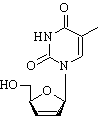The U.S. Food and Drug Administration emailed the following warning on March 1, 2002. The FDA also reported this information at the 9th Conference on Retroviruses and Opportunistic Infections on February 28 [abstract LB 14].
[Comment: Patients should remember that this warning describes a rare condition associated with drugs that have been used by thousands of people for many years. It may have little impact on treatment decisions. But patients and doctors need to be aware of the possibility, so that patients can get medical attention early if the problem is suspected, and suspend or change their treatment if necessary. JSJ]
"Changes have been made in the WARNINGS, PRECAUTIONS, ADVERSE REACTIONS, and PATIENT INFORMATION sections of the ZERIT (stavudine, d4T) label to describe the occurrence of lactic acidosis and neuromuscular toxicity in patients using stavudine.
A total of 25 patients with neuromuscular weakness resembling Guillain-Barre syndrome in association with lactic acidosis were reported to the FDA's Adverse Event Reporting System. In most cases, antirctroviral therapy was continued in the presence of symptoms that might have been due to lactic acidosis, such as abdominal pain, nausea, and fatigue, leading to death in six of the patients. Most of these patients (22 out of 25) were receiving antiretroviral combinations containing stavudine. Although causality has not been established, these findings were consistent with recent reports in peer-reviewed journals that the use of stavudine in antiretroviral combination therapy may increase the risk of lactic acidosis. Therefore, the stavudine label now includes a warning that its use may increase the risk of lactic acidosis, which represents a rare, but serious adverse event. The label now includes the symptoms of the newly described symptomatic hyperlactemia syndrome, and the recommendation for prompt suspension of all antiretroviral therapy in suspected cases of lactic acidosis with or without neuromuscular weakness. Permanent discontinuation of stavudine should be considered in confirmed cases of lactic acidosis.
Please refer to the Zerit label for full prescribing information. A copy of the revised labeling is available at:
http://www.fda.gov/cder/foi/label/2002/20412S0I7.pdf
Bristol-Myers Squibb Company, which makes and markets Zerit, is distributing a letter to health care providers giving more detailed information. The letter reads:
February 2002
Dear Healthcare Provider,
Bristol-Myers Squibb Company would like to remind healthcare providers caring for persons with HIV of the potential for lactic acidosis as a complication of therapy with nucleoside analogues, including ZERIT (stavudine), d4T. The early signs and symptoms of clinical events associated with hyperlactatemia should receive careful attention because of the life-threatening potential of the most extreme manifestation, lactic acidosis syndrome (LAS).
Bristol-Myers Squibb has received reports of rare occurrences of rapidly ascending neuromuscular weakness, mimicking the clinical presentation of Guillain-Barre syndrome (including respiratory failure), in HIV-infected patients receiving stavudine in combination with other antiretrovirals. Some cases were fatal. Most of the cases were reported in the setting of lactic acidosis or symptomatic hyperlactatemia and, in most, antiretroviral therapy had been continued in the presence of non-specific signs compatible with early symptomatic hyperlactatemia that preceded the development of neuromuscular signs and symptoms. If motor weakness develops in a patient receiving stavudine, the drug should be discontinued.
Confirmed elevations of serum lactate may be associated with a broad spectrum of clinical manifestations, ranging from asymptomatic hyperlactatemia, through symptomatic non-acidotic hyperlactatemia (SHL), to acute severe LAS. Early signs and symptoms associated with a high lactate may be subtle and include generalized fatigue, digestive symptoms (nausea, vomiting, abdominal pain, and sudden unexplained weight loss), respiratory symptoms (tachypnca and dyspnea), or neurologic symptoms (including motor weakness). Patients with these symptoms should promptly interrupt antiretroviral therapy, and a full medical work-up should be performed rapidly. (i) Permanent discontinuation of stavudine should be considered for patients with confirmed LAS. It is important to note that symptoms associated with hyperlactatemia may continue or worsen following discontinuation of antiretroviral therapy.
At this time, prospective monitoring of lactate levels does not appear to be helpful in predicting the subsequent occurrence of SHL or LAS. (i)
Although relative rates of lactic acidosis have not been assessed in prospective well-controlled trials, longitudinal cohort and retrospective studies suggest that this infrequent event may be more often associated with antiretroviral combinations containing stavudine. (ii, iii, iv)
See the enclosed full prescribing information for ZERIT[R] for additional information regarding the recommended use of stavudine. If you have any further questions, please contact the Medical Information Department at Bristol-Myers Squibb Company at 1-800-426-7644.
Sincerely, Michael R. Stevens, PharmD, Vice President, Medical Affairs, Virology
(i). Brinkman K. Management of hyperlactatemia: no need for routine lactate measurements. AIDS 2001; 15: 795-797.
(ii.) John M, Moore CB, James IR, et al. Chronic hyperlactatemia in HIVinfected patients taking antiretroviral therapy. AIDS 2001; 15: 717-723.
(iii.) Lonergan JT, Havlir D, Barber E, Mathews WC. Incidence and Outcome of Hyperlactatemia Associated with Clinical Manifestations in HIV-Infected Adults Receiving NRTI-Containing Regimens. 8th Conference on Retroviruses and Opportunistic Infections. Chicago, February 2001 [abstract 624].
(iv.) Gerard Y, Maulin L, et al. Symptomatic hyperlactatemia: an emerging complication of antiretroviral therapy. AIDS 2000; 14: 2723-2730.
COPYRIGHT 2002 John S. James
COPYRIGHT 2002 Gale Group



